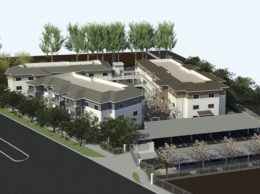Proposed peaker plant in Oxnard bad idea because of flood vulnerability
Reliability is the key point emphasized in the Pacific Coast Business Times editorial July 17 (Oxnard peaker plant should be approved).
During the CPUC evidentiary hearings held in May regarding the NRG proposal, the city of Oxnard provided proof based on state of the art scientific evidence that storm surge patterns and sea level rise modeling indicate that the plant location may be inundated by coastal flooding by 2030, within the early life of the proposed plant.
Additional scientific evidence shows that the newly discovered earthquake fault between Goleta and Santa Monica puts the coast at the Mandalay Generating Station at risk for a tsunami event. These are potential hazards and all California coastal jurisdictions must consider such dangers when doing coastal and emergency planning and preparedness.
So why choose vulnerability over reliability?
You make the assertion that “it is a cost-effective way to transition from the ugly existing power stations at Mandalay Beach to a source of power that will increase grid reliability across the Ventura and Santa Barbara county portions of Southern California Edison’s territory.” What is this statement based on?
I understand that another company proposed to build the replacement power source in an inland industrial location, close to the existing transmission lines. SCE rejected this proposal.
As SCE has had a long relationship with NRG, one might reasonably ask if this relationship is too cozy at the expense of Oxnard and the ratepayers?
The public is not allowed to see the details of the other proposals and to assess whether or not they might be better for the entire region as well as Oxnard.
The current criminal investigations of misdeeds at the CPUC by some current and former commissioners, including improper, private communications and dealings with energy companies and investor-owned utilities, do not engender confidence in the process.
For too long, consumers and ratepayers have had little influence over the process of rate setting, siting, permitting and contracts for energy production and distribution. But thanks to the tireless work of many advocates, the fairness and appropriateness of the entire process is being scrutinized here in Oxnard and everywhere in our state.
At the July 15 CPUC public participation hearing, hundreds of local residents appeared. Most speakers were opposed to NRG’s proposal.
While a small number were in support, their concerns were understandably about the need for jobs. Let it be noted that NRG’s proposed new plant will only require 17 permanent jobs. However, there will be construction jobs in our region wherever the replacement plant is built. And there will be plenty of good jobs with the demolition of the Mandalay station. There will be no job loss if NRG’s proposed power plant is not built on Oxnard’s beach.
We should question use of the phrase “social justice crowd” and so forth. Is this meant to denigrate people who want to see social, economic and environmental justice? I hope not. California’s economic future and the health and prosperity of all of its residents depend on social justice, which will give an equal chance for everyone to excel and compete in the national and world economy.
We do not just accept the existing power company’s vague promises to remove and clear threats to leave their rusting behemoths on our most beautiful but abused coast.
Finally, if reliable electricity is what we want and need, responsible decision makers will not put critical infrastructure on the coast.
I am proud to say that the city of Oxnard is officially taking a strong stand against further unwise and risky exploitation of our coastal resources.
• Carmen Ramirez is the mayor pro tem of the city of Oxnard. She writes as an individual council member and not on behalf of the Oxnard City Council.










